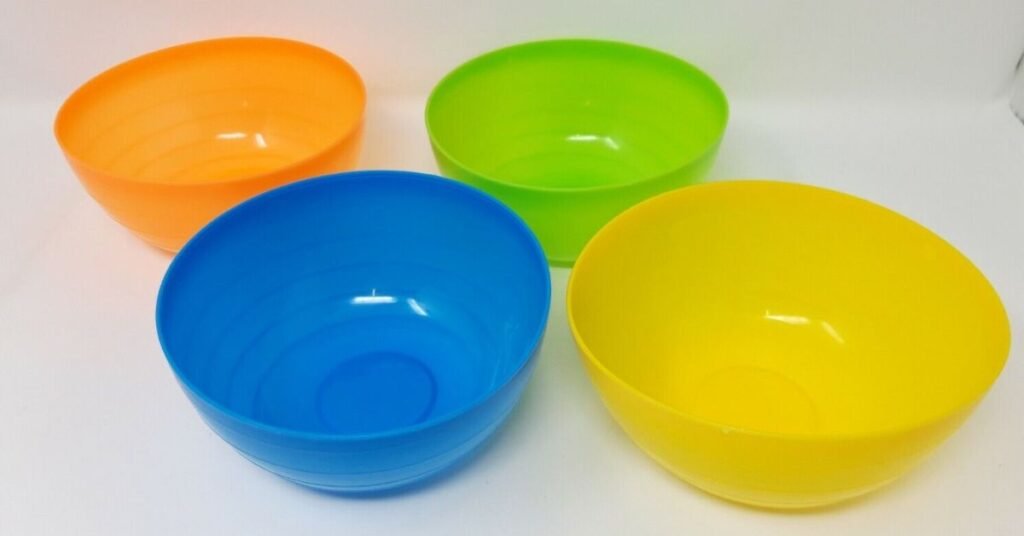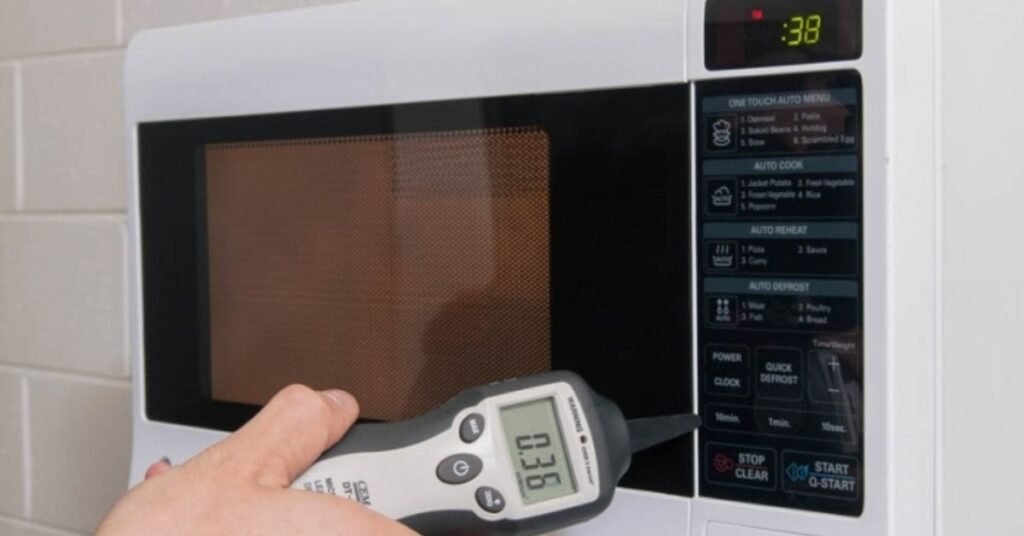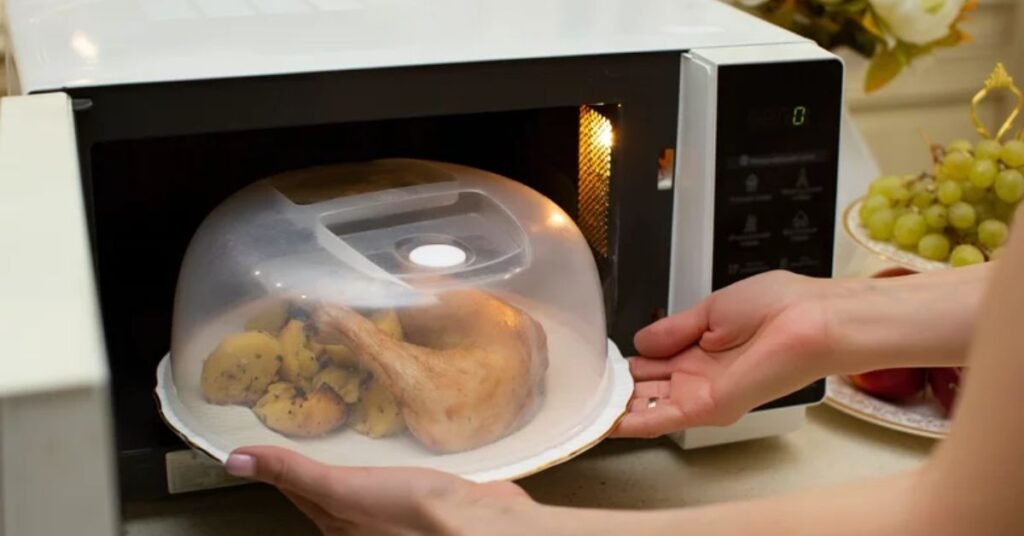However, when you’ve loved your meal, you might wonder if the leftover meals in the plastic bowls available may have been correctly reheated inside the microwave. This query is extra, not unusual, than you may probably count on, especially for people who enjoy their food on the pass or are seeking to hold leftovers for later.
Yes, they may be microwave-steady. Panda Express bowls are normally designed for single use.
Let’s dive into whether Panda Express bowls are microwave steady, the ability dangers concerned, and the way to efficiently reheat your leftovers.
Understanding the Materials:
First, it’s crucial to comprehend what Panda Express bowls are made from. Most of these containers comprise polypropylene (PP), a form of plastic frequently used in meal packaging due to its sturdiness and heat resistance. Polypropylene is considered microwave-safe with the aid of many standards, but it’s usually realistic to double-take a look at the proper box.
Identifying Microwave-Safe Symbols:
Look for symbols or labels on the bottom of the field to determine if a Panda Express bowl is microwave-secure. A microwave-steady image commonly resembles a microwave with wavy strains or, every so often, states “microwave safe.” If the bowl has this photo, it’s designed to resist the heat generated by microwaving. However, if the bowl lacks any indication, it’s better to err on caution.
Types of Panda Express Bowls:
Panda Express gives a lot of bowls for her food, and the shape of the bowl you get preserved may also rely on the appropriate region and the form of meal ordered. Here are the not-unusual varieties of Panda Express bowls:
1. Plastic Bowls:

- Material: Typically manufactured from polypropylene or comparable plastics.
- Usage: Used for every dine-in and takeout meal.
- Features: Usually encompass an easy plastic lid, designed for unmarried use, however strong enough for brief-time period food storage.
- Microwave Safety: Often no longer explicitly categorized as microwave-steady. Check the bottom for any microwave-strong symbols or labels earlier than microwaving.
2. Paper Bowls:
- Material: Made of covered paper, just like the ones used for soup boxes.
- Usage: Used extra frequently than no longer for takeout, in particular for first-rate items like soups or entrees with sauces.
- Features: Often encompass a good-becoming paper or plastic lid.
- Microwave Safety: Generally strong for microwaving, but keep away from prolonged heating times to prevent weakening of the paper cloth.
3. Foam Bowls (Less Common):
- Usage: Occasionally used for takeout in high first-rate locations.
- Microwave Safety: Not solid for microwaving, as foam can melt and release dangerous chemical compounds.
4. Specialty Bowls:
- Bento Boxes: Occasionally used for particular promotional objects or precise meal gadgets.
- Reusable Bowls: Some places also offer reusable bowls for purchase, intended for more than one use and often microwave-steady.
Also Read: Riddle For A Refrigerator-The Ultimate Guide
Testing Microwave Safety at Home:
Testing microwave protection at home guarantees you can use numerous packing containers and utensils without damaging your microwave or compromising protection. Here are the steps and problems for finding out microwave safety:
1. Look for Recycling Codes:
Plastics with recycling codes 1, 2, 4, and 5 are usually stable for microwaving. Avoid plastics with codes three, 6, and seven, as they will no longer be microwave-steady.
2. Perform a Microwave Test:

- Place a microwave-steady container with a small amount of water in the microwave together with the sphere you want to check.
- Microwave on excess for 1 minute.
- Carefully contact and test out each sector and the water. If the field and the water are cool, it’s miles, possibly microwave-strong.
- If the sector is warm or heat, it cannot be microwave-stable.
3. Check for Warping or Melting:
If you study any warping, melting, bubbling, or discoloration of the field sooner or later or after microwaving, do not use it for additional microwave heating.
4. Glass and Ceramic Safety:
Glass and ceramic containers are usually microwave-steady and have steel accents or decorations. Always take a look at any metallic additives earlier than microwaving.
Also Read: Can You Put A Hydro Flask In The Refrigerator?-Complete Guide
Alternative Solutions:
When confronted with the need to microwave meals but lacking a microwave-stable field, there are various opportunity solutions you can consider:
1. Transfer to a Microwave-Safe Dish:

- Solution: Transfer the meals from the non-microwave-secure field to a dish that is regarded to be microwave-stable, which includes glass or ceramic.
- Benefits: Ensures protection and avoids potential harm to the microwave or health dangers from using inappropriate boxes.
2. Use Microwave-Safe Covers or Wraps:
- Solution: Cover the meals with a microwave-safe cowl, collectively with a microwave-stable lid or vented plastic wrap.
- Benefits: Allows for secure microwaving without exposing the food to non-microwave-secure bins.
3. Utilize Oven or Stovetop:
- Solution: Reheat the meals in an oven-secure dish in a traditional oven or on a stovetop in a pot or skillet.
- Benefits: It provides a possible approach to warm meals thoroughly without counting on a microwave.
4. Consider Disposable Microwave-Safe Containers:
- Solution: Purchase paper plates or bowls made specifically for use in microwaves and disposable packaging containers that are stable in the microwave.
- Benefits: It offers convenience and safety without washing or reusing non-microwave-secure bins.
5. Check for Temporary Microwave-Safe Labels:
- Solution: Some bins can also have transient microwave-strong labels or liners that may be used for an unmarried reheating consultation.
- Benefits: Provide a brief answer if no distinct microwave-secure bins are available.
Also Read: What Gauge Extension Cord For Microwave?-The Comprehensive Guide
FAQ’s:
1. How do I apprehend if my bowl is microwave steady?
If you aren’t high-quality, whether a few components can be bypassed inside the microwave, check the back or backside to look for a microwave-regular label or image.
2. Is Panda Express Styrofoam microwave stable?
Foam packing containers are reachable for maintaining foods and drinks at heat or bloodless temperatures, but they aren’t the first-rate alternatives in phrases of reheating meals.
3. Are takeout bowls microwave secure?
Unfortunately, single-use plastic containers are commonly no longer microwave-secure.
Conclusion:
In summary, at the same time, as most Panda Express bowls are made from microwave-steady polypropylene, it’s important to affirm this by checking for microwave-steady symbols and making sure the containers are loose from unstable chemicals like BPA and phthalates.
Proper microwaving techniques, which include putting off lids, using microwave-safe covers, and stirring food, can enhance safety and food satisfaction.

